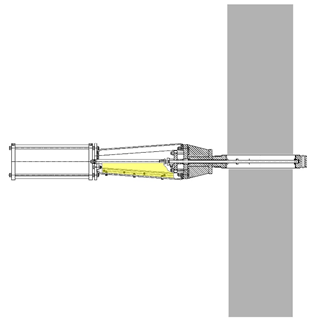Horizontal Knife Gate Valves: Challenges and Solutions
Knife gate valves are more commonly installed vertically, so why might a knife gate be positioned horizontally?
#gate-globe-check
Applications
Knife gate valves are installed horizontally when installing a vertical pipe, transporting dry solids, pellets and powders, and when releasing dry, free-flowing materials from gravity-fed hoppers, mixers and silos. The available space around the valve being installed also affects the situation; sometimes there is no option but to lay the valve horizontally due to insufficient overhead space.
Engineers provide solutions to these challenges with various design techniques to provide proper operation. With a knife gate lying on its side, the gate needs supporting as the packing is pressed by the weight of the gate on the gravity side.
There are two fundamental support areas: (1) internally within the valve body and (2) externally on the yoke. Both supports may be necessary, both when the gate is open and when it is closed. Depending upon the application and type of knife gate valve, there are differing ways to design the support requirements: use thicker material, stiffen the body or construct a more substantial yoke. The fundamental reason behind these modifications is to keep the gate aligned for the best seat seal.
Additional adaptions include internal hardened support strips and external support within the site area. Valve yokes can be designed to support heavy actuators but, due to the effects of vibration, it is always recommended that actuators are supported when the stem and yoke are horizontal.
There are two planes on which the knife gate valve can be positioned: on edge and horizontal. The two diagrams below show how the support is integrated into the design for these two planes.
Knife gate valves 18 inches and larger provide excellent service laying either on edge or horizontally, when additional support to the gate and valve is designed to accommodate the orientation and service conditions of the valve.
These special support considerations are needed to keep the gate aligned and provide the best packing and seat seal, no matter if the specification calls for round, square or rectangular, or bonneted or bonnetless. Contractors should seek out a manufacturer that specializes in fabricating custom knife gate valves.
Vikki Pynenburg is marketing manager of Lined Valves.
RELATED CONTENT
-
Creating a Standard for Severe Service Valves
Severe service valves are offered in several standard designs, including non-return, isolation and control types.
-
Check Valve Installation Considerations to Maximize Process Performance
Key considerations in successful check valve performance.
-
Stop Check Valves
Stop check valves are vital to several industries to protect boilers and other equipment.












 Unloading large gate valve.jpg;maxWidth=214)